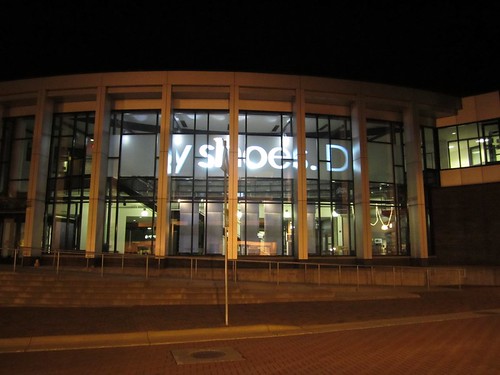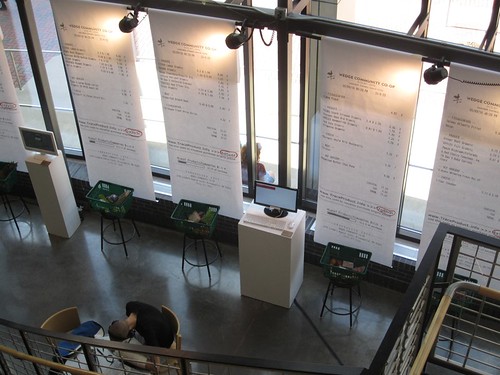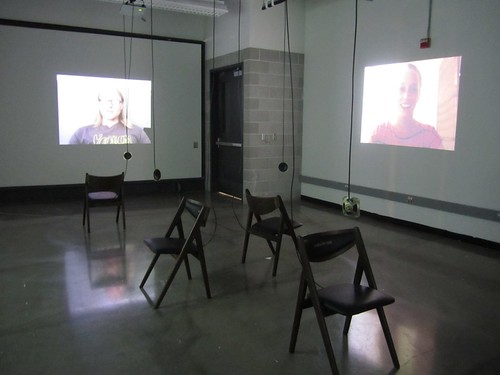AOV2 @Spark Festival

Spark Festival. Regis Art Center. tectonic industries, Perhaps this is the only way of knowing if anything was ever important to you.
For one week each year, the Spark Festival gathers creators and performers of new media arts from around the world to the Twin Cities of Minneapolis/St. Paul, USA, to showcase their work to the public.
Art(ists) On the Verge is an intensive, mentor-based fellowship program for Minnesota-based, emerging artists or artist groups working experimentally at the intersection of art, technology, and digital culture with a focus on network-based practices that are interactive and/or participatory. This is the second round of Art(ists) On the Verge grants, which are generously supported by the Jerome Foundation.
Arlene Birt, Kyle Phillips, Tyler Stefanich , and tectonic industries are presenting their Northern Lights.mn supported projects for Art(ists) On the Verge at the 8th Spark Festival of Electronic Music and Art, which opened Wednesday, September 29.
Arlene Birt, Visualizing Sustainability: Tracing Grocery Purchases

Visualizing Sustainability: Tracing Grocery Purchases is part of a larger project, TRACEPRODUCT.INFO , which, is a prototype for an in-store, retail-wide system for displaying information on grocery product backgrounds at point-of-sale. It aims to “visualize the narratives behind the seemingly ubiquitous everyday objects that we interact with as consumers; focusing on the ways in which these products connect us to the larger world. By bringing the attention of the shopper to the detailed and factual backgrounds of their everyday choices, TRACEPRODUCT.INFO seeks to inspire people to understand more about how their individual purchases impact global environment and society.”
The project was going to be displayed as a proof of concept at a local store but last minute technical difficulties at the partner store prevented this. In the Regis Center, blow ups of sample “receipts” are displayed along with their corresponding basket of groceries. Via a kiosk, viewers can enter product IDs and review a visualization of the “localness” of the products. To try this online, go to http://traceproduct.appspot.com/ and enter any of these codes: 1a2b3c, 4d5e6f, 7g8h9i, 1x2y3z, or 4x5y6z.
Kyle Phillips, Indexical Architecture
Kyle’s original Art(ists) On the Verage proposa l for “Empathetic Architecture” stated “I would like to create an empathetic space, which explores the network and relationship between itself and the people that inhabit it.” In part, the past 9 months have been spent understanding just how difficult it is to create a successful and compelling responsive architecture. Kyle’s installation in the Regis Center has at least 3 components. A shotgun microphone in the gallery captures conversations and sound in a very localized part of installation. These sounds are played back after an offset by speakers at the entrance to the room as a kind of attract sequence. Once inside, the viewer inevitably moves toward a shrouded space with a projection surface, which alternates between a grid of faces previously inhabiting the space and a real-time overlay of one of those faces and yours, as you gaze at the projection. Finally, projected spots on the floor indicate the “weight” of where the most people have stood, and a faint glow follows you one the floor as you walk around. Each of these reactive elements of the installation remind you of all the others who have been through the installation, also trying to figure it out.
Tyler Stefanich, Re-presented Narratives
Tyler’s work is also about memory. When you walk into the room, there are four chairs, each facing a projection of a person, with a raw speaker hanging on its own speaker wires next to each chair. You sit and put the speaker to your ear. The person is describing an event. An event which happens to have been Tyler’s graduation show at MCAD, where he told stories in person about project home movies that were not his own. Each person it becomes apparent is describing what they remember of their encounter with this performance. Their memories are not always precise, and if you sit through a couple of iterations or as you move from chair to chair, you may notice that each telling becomes less clear. It is physically degraded like a photocopy of a photocopy of a photocopy. Eventually, by the end of the show, the stories may be little more than white noise, which may also be the end of our own “shows,” eventually…
tectonic industries, Perhaps this is the only way of knowing if anything was ever important to you.
tectonic industries (Lars Jerlach and Helen Stringfellow) are endurance artists–although that’s probably not how they would describe themselves. Or at least endurance is only part of their practice. For The One Year Project (2007) they cooked one meal a day in chronological order from the Rachael Ray cookery book, “365: No Repeats A Year of Deliciously Different Dinners.” For their AOV2 grant , they proposed “for the duration of 2010, tectonic industries will transcribe from spoken word to text, every new episode of the Oprah Winfrey show and publish the results online every weekday, with summaries posted to Facebook and Twitter.” For this Another One Year Project , tectonic industries creates three versions of each Oprah show. One is not a verbatim transcript, but it is an honest attempt to “report” the entirety of the program. The second version is a distillation into the top 5 lessons learned from the day’s episode. And finally, there is a 140 character Twitter feed of the episode, from which the title of this installation derives. While the project is not yet completed, tectonic industries is streaming across the facade of the Regis Center, the Tweets of the episodes viewed to date.

